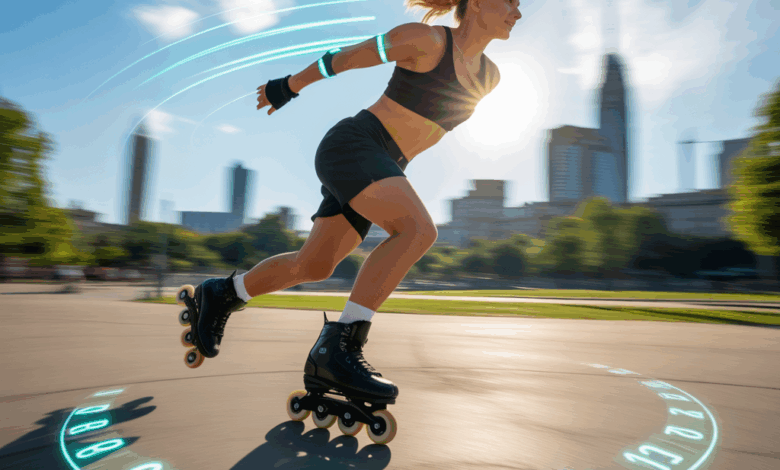How Many Calories Does Roller Skating Burn

Ever stood in your closet staring at a pair of dusty skates and wondered if lacing them up could actually help you lose weight — or at least burn enough calories to justify that extra slice of pizza? Roller skating isn’t just nostalgic fun; it’s a serious calorie-burning, full-body workout that feels more like play than exercise. In this guide you’ll learn exactly how many calories does roller skating burn, plus practical tips, workout variations, and real-world examples to make skating part of your fitness routine.
How roller skating burns calories (the science in plain English)
Calories burned during any activity depend on three main factors: your body weight, the activity’s intensity, and the duration. Exercise scientists use METs (metabolic equivalents) to estimate calorie expenditure. A higher MET means more energy burned. Roller skating spans a range of intensities — from relaxed laps at a rink to speed or power skating — so calorie estimates also vary.
How many calories does roller skating burn? Real numbers and examples
Below are approximate calories burned per hour for different intensities. These are estimates based on typical MET ranges and the formula used by exercise physiologists. Use them as practical guides rather than exact figures.
- Light / recreational skating (leisurely cruising, rink dancing) — ~5 METs
- Moderate skating (steady park/boardwalk cruising) — ~7 METs
- Vigorous skating (speed, interval training, uphill/resistance) — ~9 METs
Approximate calories burned per hour (by body weight):
- 125 lb (57 kg): light ~300 kcal/hr, moderate ~420 kcal/hr, vigorous ~540 kcal/hr
- 155 lb (70 kg): light ~370 kcal/hr, moderate ~517 kcal/hr, vigorous ~664 kcal/hr
- 185 lb (84 kg): light ~440 kcal/hr, moderate ~617 kcal/hr, vigorous ~793 kcal/hr
If you skate for 30 minutes, roughly divide those numbers in half. So a 155 lb person doing moderate skating for 30 minutes would burn about 260 kcal — close to a small snack but paired with strength and balance benefits.
What affects your calorie burn while skating?
- Body mass: heavier bodies expend more energy to move.
- Intensity: speed, resistance, and terrain (hills/rough surfaces) raise the MET value.
- Skill level: beginners often burn more energy as they balance and correct form; efficient skaters maintain speed with less effort.
- Duration and rest intervals: continuous skating burns steadily; intervals spike calorie burn and metabolic afterburn.
Benefits beyond calorie burn
Roller skating isn’t just about the calories. It improves cardiovascular fitness, builds lower-body and core strength, enhances balance and coordination, and can reduce stress thanks to the rhythmic, social nature of skating. That mix makes it an excellent cross-training option for runners, cyclists, or anyone bored with the treadmill.
Practical roller skating workouts and variations
Use these session templates to match your goal — fat loss, cardio endurance, or fun fitness.
Beginner — 30-minute steady skate
- 5 min warm-up (slow laps + dynamic stretching)
- 20 min steady cruising at a conversation pace
- 5 min cool-down and stretching
Intermediate — 40-minute interval skate
- 5 min warm-up
- 8 rounds: 1 min hard effort / 2 min easy recovery (24 min)
- 10 min steady cool-down
Advanced — 60-minute mixed session
- 10 min warm-up with drills (crossovers, one-foot glides)
- 20 min endurance at moderate pace
- 20 min hill repeats or resistance-focused sprints
- 10 min cool-down and mobility work
Pro tip: Add bodyweight strength moves off-skates (squats, lunges, planks) twice weekly to boost skating power and calorie burn.
Tips to maximize calorie burn and stay safe
- Wear proper protective gear: helmet, wrist guards, knee and elbow pads — staying injury-free keeps you consistent.
- Focus on intervals: short, high-effort bursts increase afterburn and overall calorie cost.
- Use varied terrain: gentle hills or resistance bands during training increases intensity safely.
- Track progress: use a fitness watch or app that estimates calories based on heart rate for more personalized data.
- Cross-train: add strength sessions and mobility work to improve skating efficiency and reduce injury risk.
Healthy lifestyle advice to support your skating results
- Nutrition: fuel workouts with a balance of carbohydrates and protein. For recovery, aim for protein within 30–60 minutes post-session.
- Hydration: even outdoor skating can dehydrate you; drink water before, during, and after long sessions.
- Sleep and recovery: aim for 7–9 hours of sleep; active recovery days (light skate, walking, stretching) help muscle repair.
- Consistency over intensity: regular 30–45 minute sessions most days beat sporadic long workouts.
For structured plans that blend skating with strength and cardio, check out our workout routines and for fueling guidance see our nutrition guides.
Real-world examples
- Emma, 28, 140 lb: Skates 45 minutes moderate intensity, 4x/week → burns ~450 kcal/session and lost 1 lb/month when combined with a modest calorie deficit and strength training.
- Marcus, 35, 190 lb: Does interval skate sessions 3x/week plus two gym days → improved cardio and lost body fat while increasing leg strength.
Frequently Asked Questions
Moderate roller skating and moderate running can burn similar calories depending on intensity and body weight. Running at a steady 5–6 mph often uses more energy per hour, but vigorous skating (intervals or sprints) can match or exceed many running sessions. It ultimately depends on effort level.
Aim for at least 150 minutes of moderate aerobic activity per week (e.g., 3–5 skating sessions of 30–60 minutes). Combine skating with strength training and a sensible calorie deficit for steady weight loss. Consistency matters more than one long session.
Yes — beginners often expend more energy because balancing and inefficient movement increase calorie cost. Start with shorter sessions to build confidence, and gradually increase duration and intensity to avoid injury.
Conclusion — Lace up and start tracking your progress
So, how many calories does roller skating burn? The short answer: anywhere from roughly 300 to 800 calories per hour depending on your weight and intensity. Beyond the numbers, roller skating delivers cardio, strength, balance, and a big dose of fun — which makes it easier to be consistent. Try a few of the workouts above, pair skating with good nutrition and recovery, and track your progress.
Ready to roll? Start with a 30-minute session this week, bookmark some of our wellness tips, and see how much more enjoyable calorie burning can be. Share your favorite skating routine or ask a question — I’d love to help you build a plan that fits your life.





